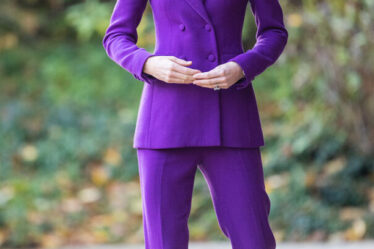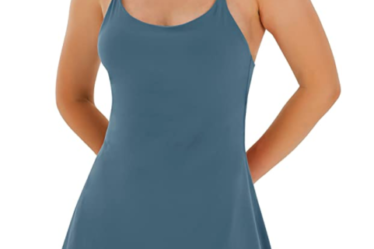
Universal Standard, the New York City-based brand known for offering products in sizes 00 to 40, has purchased plus-size workwear label Henning, the company told BoF Wednesday.
Created by model and former Glamour editor Lauren Chan, Henning is a small direct-to-consumer brand that offers straightforward, office-appropriate pieces like blazers and trousers at a contemporary price point. Under Universal Standard, Henning will cease operations and fold into the larger retailer, according to Chan and Universal Standard co-founder Polina Veksler.
Chan will take on the role of head of brand partnerships at Universal Standard, where she’ll oversee collaborations and work alongside its marketing team. As an influencer in the size-inclusive community, Chan will also help drive customer engagement for Universal Standard through livestreams and other consumer-facing events.
Henning will bring its workwear expertise to Universal Standard, which is known for elevated basics. The first collection to reflect a sharper and deeper focus on the category will be in fall 2023, said Veksler, who serves as the retailer’s chief executive officer.
“[Workwear] is a white space in the market, and it’s the No. 1 thing our customers say they want at our trunk shows,” Veksler added. “Lauren has a lot of expertise in the offering that’s lacking in the space, and also the marketing [component] and communications to the customer, and expertise on the fit side of things.”
Veksler launched Universal Standard with co-founder Alex Waldman in 2015 with the ambition of democratising the shopping experience regardless of size. Today, the company touts itself as among the most size inclusive fashion brands in the world. In 2018, Universal Standard raised $7 million Series A funding from investors, including Natalie Massenet’s venture fund Imaginary, Gwyneth Paltrow, and MatchesFashion founders Tom and Ruth Chapman.
Today, Universal Standard is fully profitable and will continue to explore opportunities to expand its offering and make size-inclusive fashion more accessible. Retailers often encounter challenges in producing plus-size apparel because larger sizes require different base patterns for the same style, and are therefore more expensive to manufacture. Retailers like Old Navy and White House Black Market ventured into the plus-size market with fanfare, only to scale back their size-inclusive offerings years later due to disappointing sales.
The demand is there — but the margins are often hard to justify for mass retailers. At the same time, recent trends in fashion have strayed away from the ubiquitous “body-positive” messaging of the 2010s. The Y2K resurgence embraces ultra-thin body standards, bolstered by the easy accessibility of diabetes medication that’s popular today for weight loss.
“There’s been a lot of chatter about regression in size inclusivity in fashion,” said Chan. “The truth is, fashion has never been that inclusive, and that’s why businesses like ours exist. We have to stay focused. The industry might be regressing, but it puts our foot harder on the pedal.”



